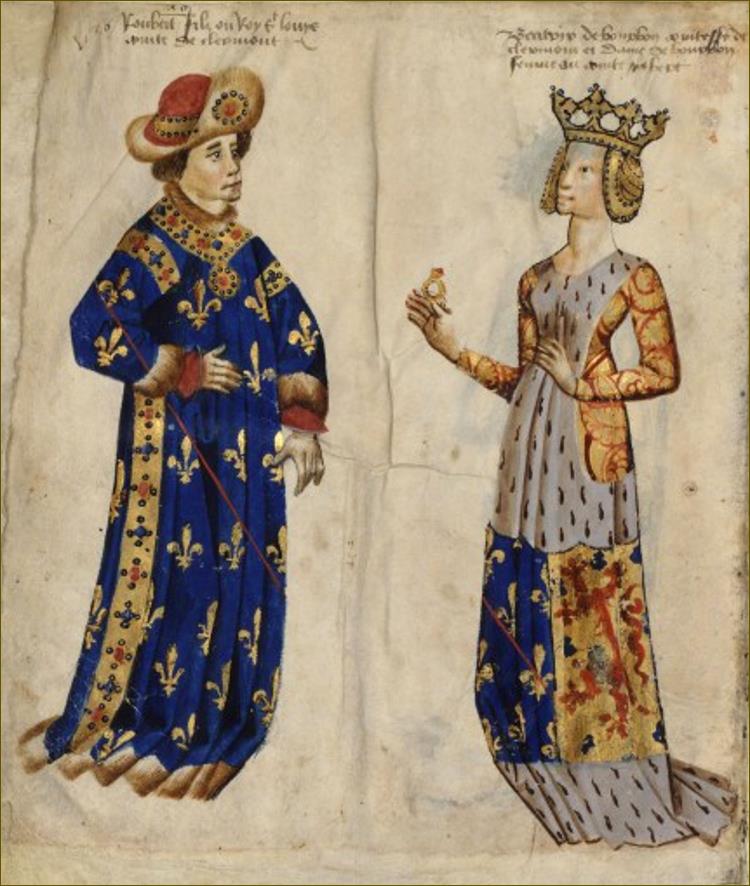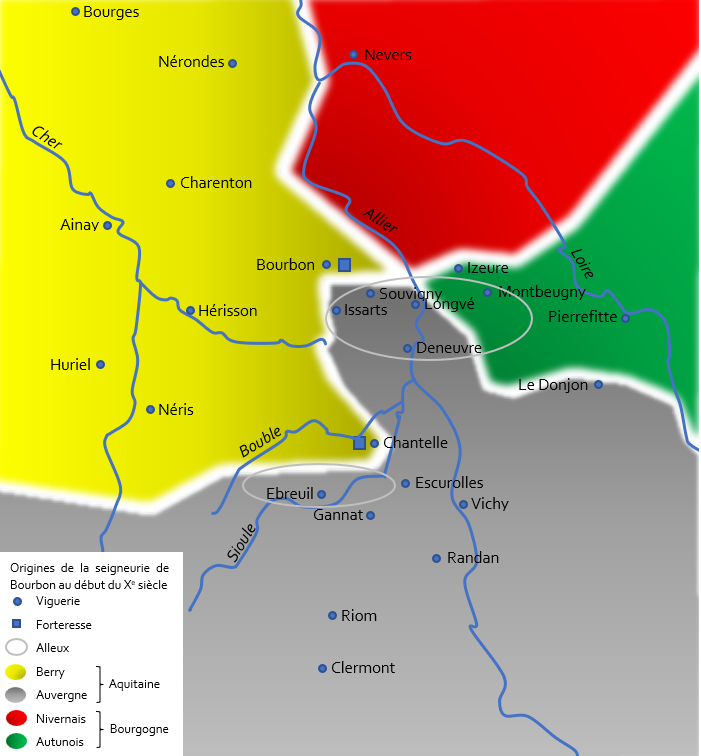
Birth of the duchy of Bourbon
In total, twelve lords, four dames, nine dukes and three
duchesses succeeded as the head of the duchy in nearly six hundred years, from
the birth of the fiefdom, in around 950 A.D. to 1532. It is at that date that
the duchy returned to the crown when the male line became extinct.
The name of the first known Bourbon ancestor, Aimard, appears in 909 in a famous charter, the donation deed by which William of Aquitaine founded the well-known Cluny abbey in Southern Burgundy for a Benedictine congregation.
In 915, Aimard, holder of a public office in Deneuvre (today Châtel-de-Neuvre, by the Allier River) for the Duke of Aquitaine, imitated his overlord in founding what would become the first of the five Cluniac priories: Souvigny.
Mayeul and Odilon of Mercœur, two famous Cluniac
abbots met their death in Souvigny in 994 and 1049. Venerated as saints in
their lifetime, the pilgrimage which started in Souvigny at their grave in the
XIth c. brought fame and legitimacy to the Archambauds of Bourbon (along
with substantial revenues).
Aimard’s son, Aimon I, can be considered the first
lord of Bourbon in around 950. He signed two deeds confirming the Souvigny
donation to Cluny from the castle. His descendants, the Archambauds, gave birth
to a powerful dynasty for the next three hundred years in Bourbon. They continuously
and forcefully looked after their territorial expansion whilst handling
tactfully the susceptibilities of the French kings. This diplomacy, combining loyalty
to the crown and will of independence, led the lords of Bourbon closer and
closer to the royal power.
In a blaze of glory, the heir to the fiefdom, Beatrice
of Burgundy married Robert of Clermont, Saint Louis’ sixth son, in 1276. The Bourbons
thus became the youngest branch of the Capetians, and the seigneury was
elevated to the status of a duchy in 1327 for their son Louis.
© March 2023
